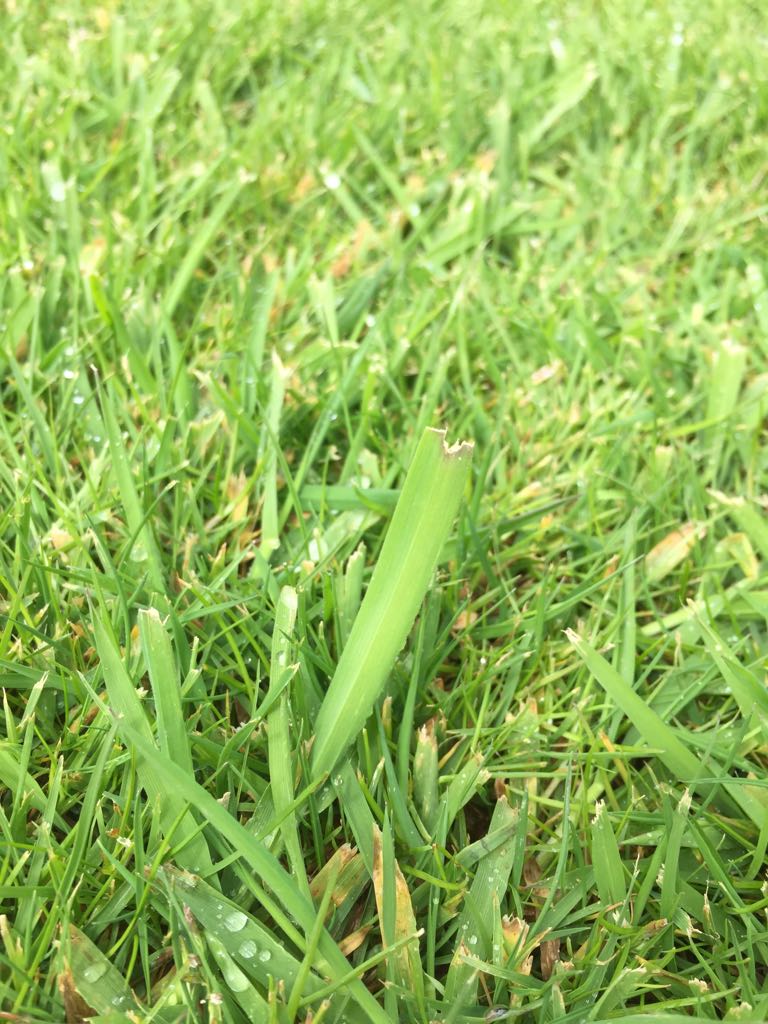A Guide to Other Lawn Problems
You may have an issue with your lawn that has not appeared in our lawn diseases, pests or weeds guide. This guide identifies any of those other lawn problems for you and potential solutions.
Please use the hyperlinks below to go straight to the lawn problem you wish to read about:
What is compaction? Compacted areas of soil in your lawn will tend to accumulate puddles when it rains, as the water does not drain well. When a lawn becomes compacted (most commonly during the summer months when the garden is used much more frequently), your grass will struggle to get oxygen and nutrients from the soil and may start to thin out or even die off.
When does compaction occur? A clay-based soil will usually be most prone to compaction of all the soil types, particularly during dry summer months with increased footfall on the lawn. But compaction can occur on any lawn.
What is the solution to compaction? The main solution to this is regular aeration which TopGrass can carry out with a machine that will drive tines into the ground, heaving the soil and allowing moisture, oxygen and essential nutrients to access the root zone, encouraging deeper roots to form. As the tines enter the soil, they create fissures allowing nutrients to disperse over a wider area. Surface drainage is also improved. Please click here to find out more about our aeration service. If you do have heavy clay soil, we also offer an annual Soil Improver service which will improve the soil quality of time, gradually changing the soil structure and biology which will help with overall drainage. This is a longer term solution that can be carried out in conjunction with annual aerations - click here for more information.
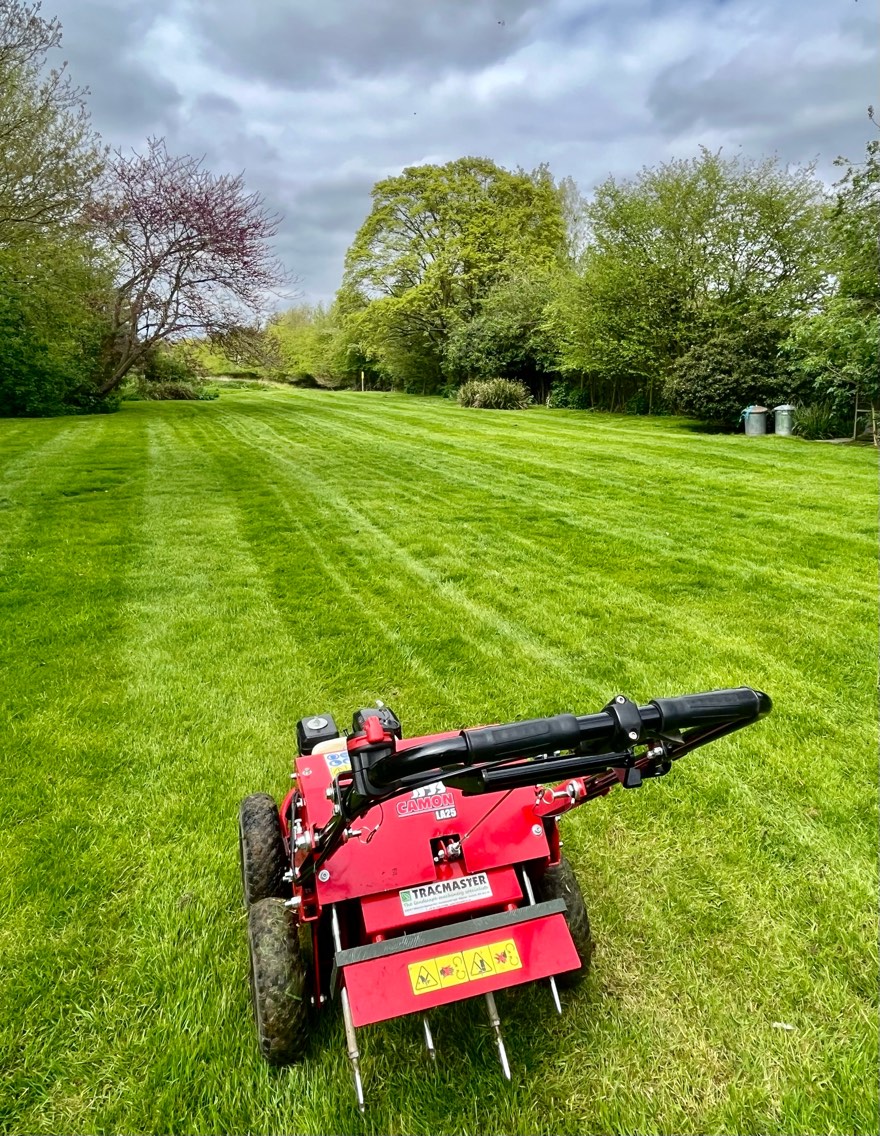
What is Dog Lichen? This is a slow-growing lichen that shows as a grey/black scale that is papery when dry and swells when wet. There is usually moss present alongside this lichen as it tends to favour the same conditions. A lichen is created when a fungus and algae live together and form a symbiotic relationship. Lichen is a danger to lawns due to its smothering of grass blades, restricting light from reaching the grass leaves.
When does Dog Lichen appear? This is caused by poor quality grass and poor drainage in a lawn. Dog Lichen also thrives on nutrient-poor soil. Shaded areas of the lawn will have a heightened likelihood of the fungus forming. Additionally, if soil is heavily compact it is more vulnerable to the growth of dog lichen.
What is the solution to Dog Lichen? Regular scarification, aeration and fertilising will help to eradicate this lichen. This is the same treatment course as used for moss. Dog lichen prospers in lawns that are severely saturated, to the point of being waterlogged, and this necessitates ensuring the lawn has proper drainage which can be done through aerating or forking the area to create holes in the soil. You can also have the TopGrass Soil Improver annual treatment to help improve the soil quality and drainage over time - click here for more information. The TopGrass Water Conserver treatment also helps improve the absorption of water into the soil and reduces the likelihood of flooding and standing water - click here for more information.
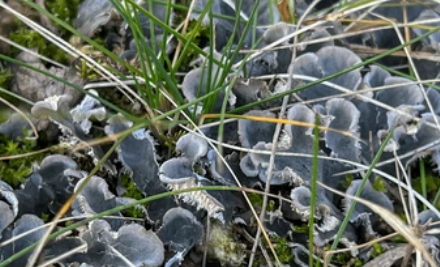
What is drought damage? Drought occurs in lawns during prolonged periods of no rainfall in which your lawn will start to brown and will cease to continue growing. In the majority of cases, lawns will recover when rainfall returns during the autumn, especially so if your lawn is well looked after. In extreme cases of lawn drought, it can lead to serious damage to the grass and cause the roots to slowly decay. The weakening of grass, as result of drought, can mean that more weeds and moss encroach on the lawn when the rain returns in autumn as the grass is sparse and not strong enough to compete. Drought is predicted to increasingly become more of an issue in the coming summers which makes close care and maintenance of your lawn even more important to prevent the damage that drought can bring.
When does drought damage occur? Lawn drought and the consequent damage (if not managed correctly) will most likely occur during the summer months, but can also take place during the early stages of autumn when rainfall is scarce.
What is the solution to drought damage? Preventative measures can be taken to reduce the negative effects of drought on your lawn, as you cannot actually stop drought from happening. One of the main strategies in combatting drought stress on your lawn is to have routine treatments on your lawn to ensure that your lawn is dense and lush to resist the effects of drought and will help for it to recover as well. When mowing your lawn during a drought, you should raise the mower blades to put less stress on the grass, and also leave the clippings (if light) from the mowing on the grass to restrict the speed at which water is evaporating from the soil. But, of course, the main element required during drought is water. It is important to tackle drought pre-emptively and water your lawn as soon as there has been a lack of rain for a few days to ensure the lawn receives continued moisture. Grass has a fairly shallow root structure so will be one of the first plants in your garden to suffer from a lack of water. As soon as your lawn begins to show signs of drought damage (yellowing) then it will take a lot of watering to get it back to where it needs to be, so pre-emptive watering is always best. Please click here for a handy watering and mowing guide for hot, dry weather. Addtionally, our Water Conserver service is a great way to tackle the effects of drought as it helps your lawn to be better at absorbing and retaining water. Also, it has a 3-month effective period so can be applied pre-emptively to cover the drier summer months. You can click here to find out more about our Water Conserver service.
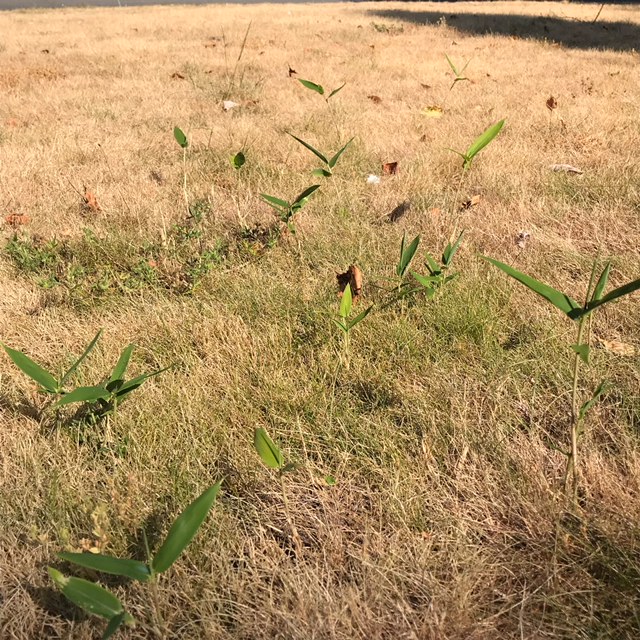
What is moss? Nearly all lawns will contain moss, of which there are several thousand species. Moss forms as dense carpet-like, spongey patches on the lawn and the colour is usually a blend of green and yellow.
When does moss appear? Moss will thrive in damp, shady areas of a lawn and is at its most reproductive in the late autumn and winter months when it will compete with the lawn during these wet months. There are a variety of conditions in which moss can flourish on lawns which include over saturated lawns, shaded lawns and nutrient deficient lawns. Moss will encroach on a lawn where the grass plant is sparse or weakened in any way which tends to happen through the autumn and winter months.
What is the solution to moss? Treating with a liquid iron solution (our Late Season and End of Season Treatments contain this solution) will quickly turn the moss to a dark colour and inhibit its growth, this then needs to be removed from the lawn. This treatment should be applied from October to December and again in January to March to ensure a continued control through the autumn and winter, but can also be applied prior to scarification. Scarification is generally carried out from late August to October, but can also be carried out in the spring - the iron treatment will dehydrate the moss and allow a scarifier to significantly reduce this unwanted material in the lawn, allowing grass to thrive along with any newly sown seed. Your TopGrass technician will give advice as to the level of scarification/seeding required to restore lawns to a desirable state. To see all of the scarification packages on offer, you can click here.

What are mushrooms? Mushrooms are the fruiting body of the fungus that is visible above ground. There is actually a complex fungi system under the lawn that will produce mushrooms when conditions are favourable. Mushrooms and the fungus in the soil don’t actually harm the lawn, they are in fact beneficial and a sign that your soil is in good health!(The exception here is Fairy Rings - click here for more information on this lawn disease). This fungus will break down organic matter into nutrients that your grass will use.
When do mushrooms appear? Ideal conditions for fungi and mushrooms to grow are moist, shady and humid areas. If there is excess moisture in the soil if there is poor drainage, then mushrooms will thrive. Mushrooms can also caused by old grass clippings and other decaying organic material creating a thatch layer. They appear when there is organic matter to break down, for example, an old buried tree stump/roots. Once their job is done, they usually disappear.
What is the solution to mushrooms? Regular scarification to remove thatch can reduce the crop. Regular aeration to ensure effective drainage of water in the soil will reduce the likelihood of lots of mushrooms appearing. If you can reduce the amount of shade in your garden, this will also help, by clipping back overgrown trees/hedges/shrubs. You can also pull existing mushrooms out from the base to try and reduce the chance of spores being released to spread more mushrooms. Ensure you do this before mowing as mowing mushrooms will disperse the spores and cause more mushrooms to grow.
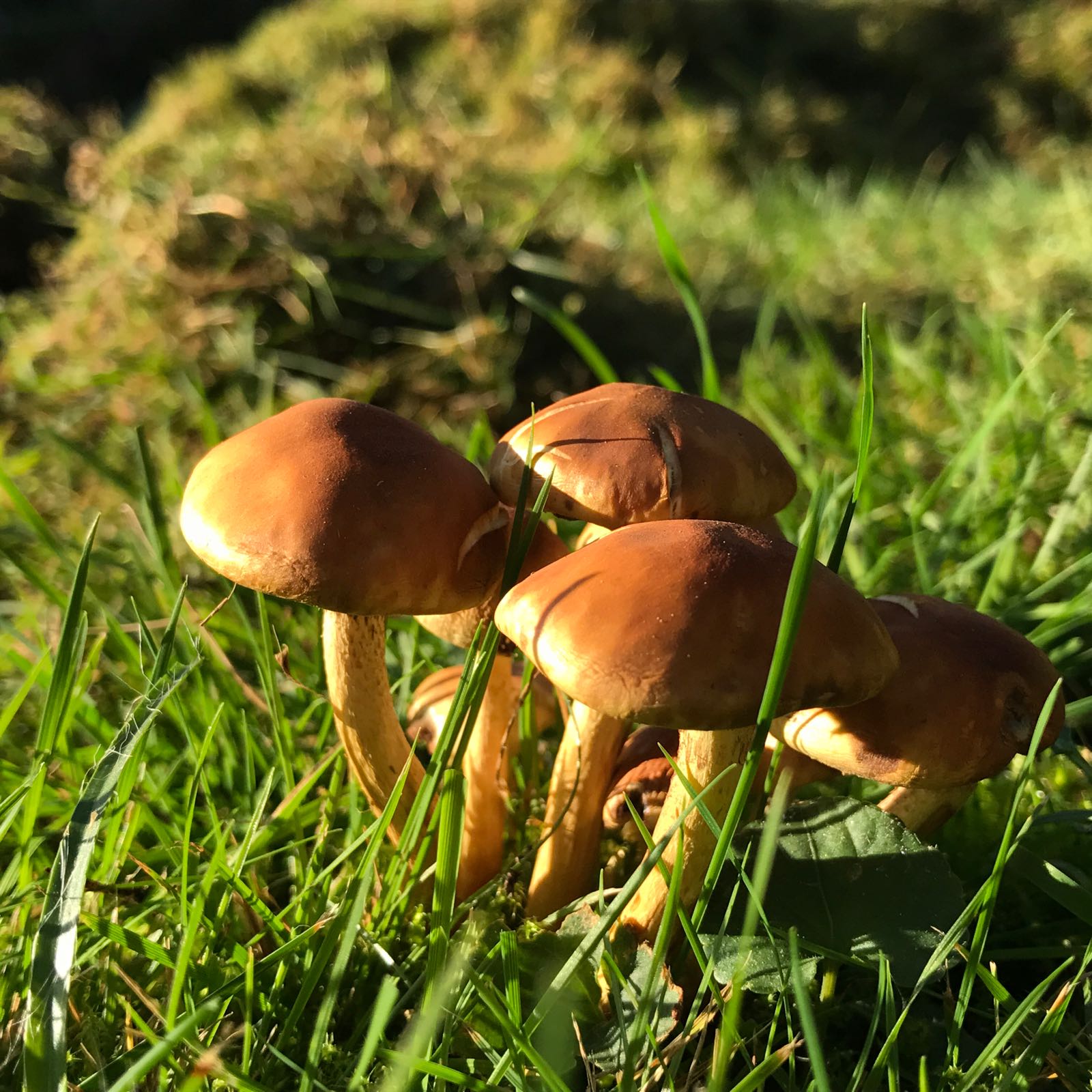
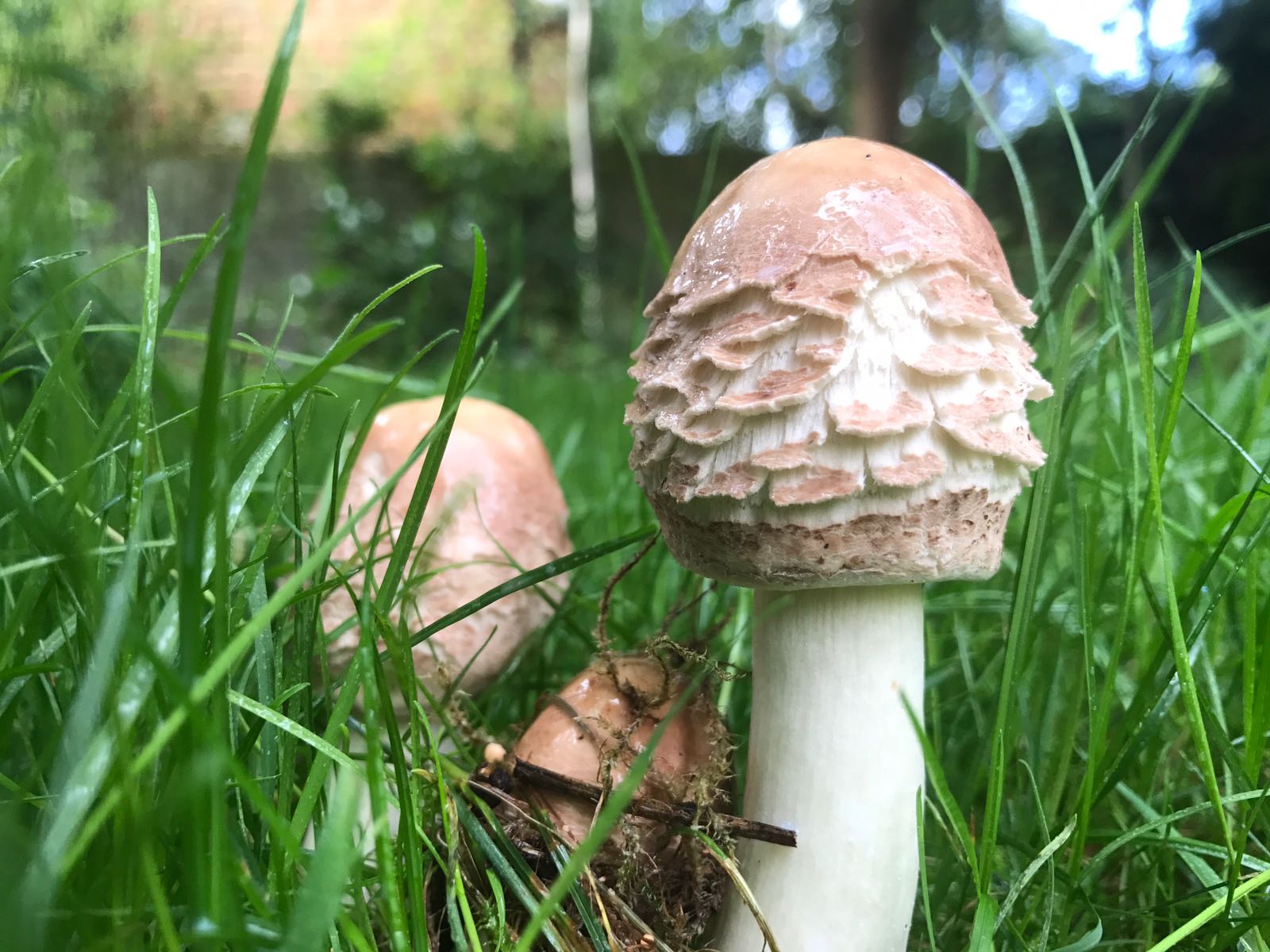
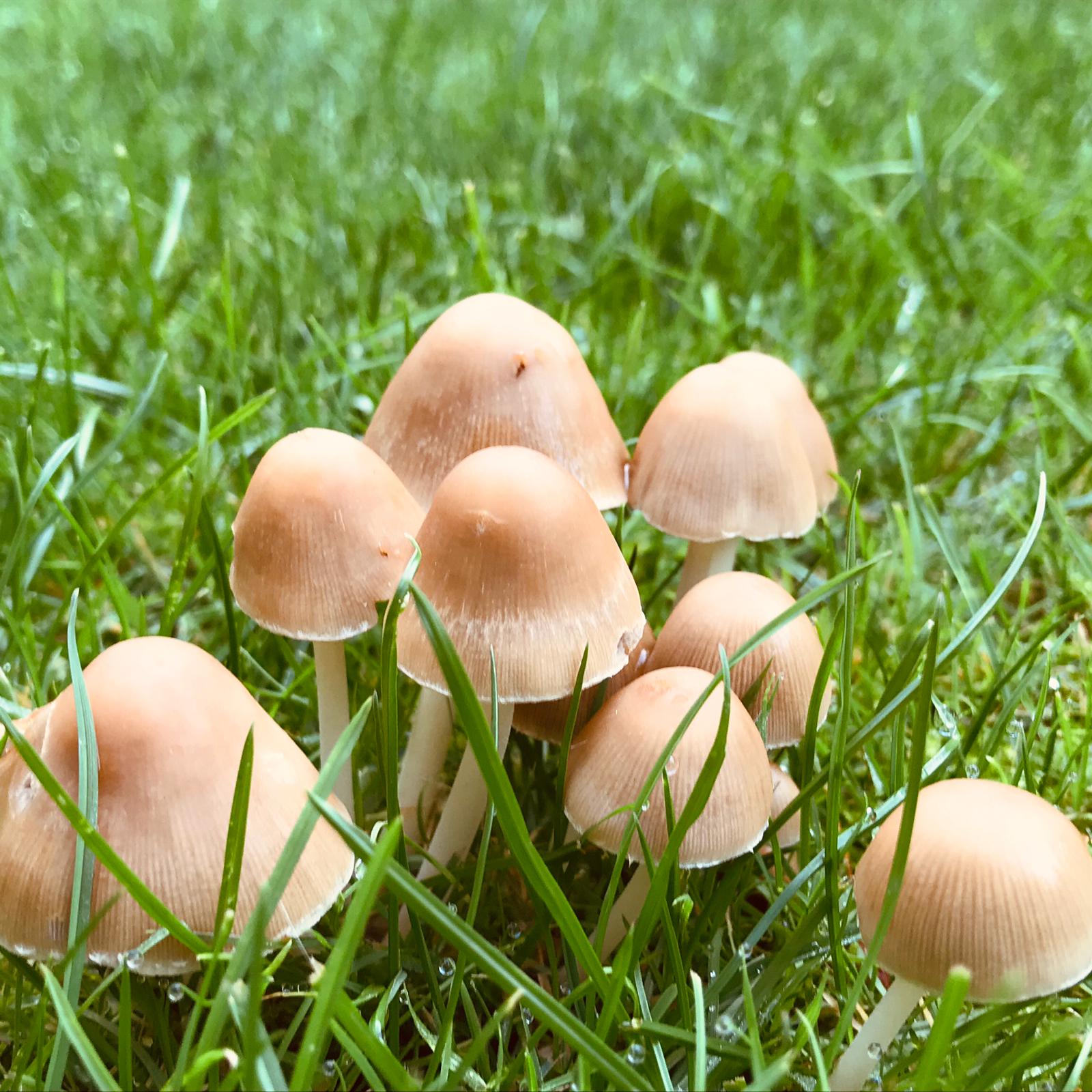
What is thatch? Thatch is a build-up of dead organic material at the base of your lawn, such as old grass clippings, leaves and other debris which will form a barrier to moisture and essential nutrients reaching the grass root zone. This will make the grass weaker and more susceptible to disease. A thick thatch layer also provides an environment in which pests can thrive. These pests will eat through the grassroots, animals will then root for the grubs (such as badgers and birds) and essentially peel the lawn back like a carpet as it no longer has any roots to hold it in place. This can be devastating for your lawn.
When does thatch appear? Thatch can build up at any time of the year, the longer it is left unattended, the more difficult it is to resolve and the more intensive scarification is required to remove it.
What is the solution to thatch? Reducing thatch alongside any moss is essential to improve the health of a lawn. This allows your lawn to breathe and room to grow. This is carried out with a professional scarifier in the autumn when the temperature and general weather conditions are more conducive to a healthy recovery and there is no danger of entering into a hot/dry weather period. Your TopGrass technician will give advice as to the level of scarification/seeding required to restore lawns to a desirable state. To see all of the scarification packages on offer, you can click here.
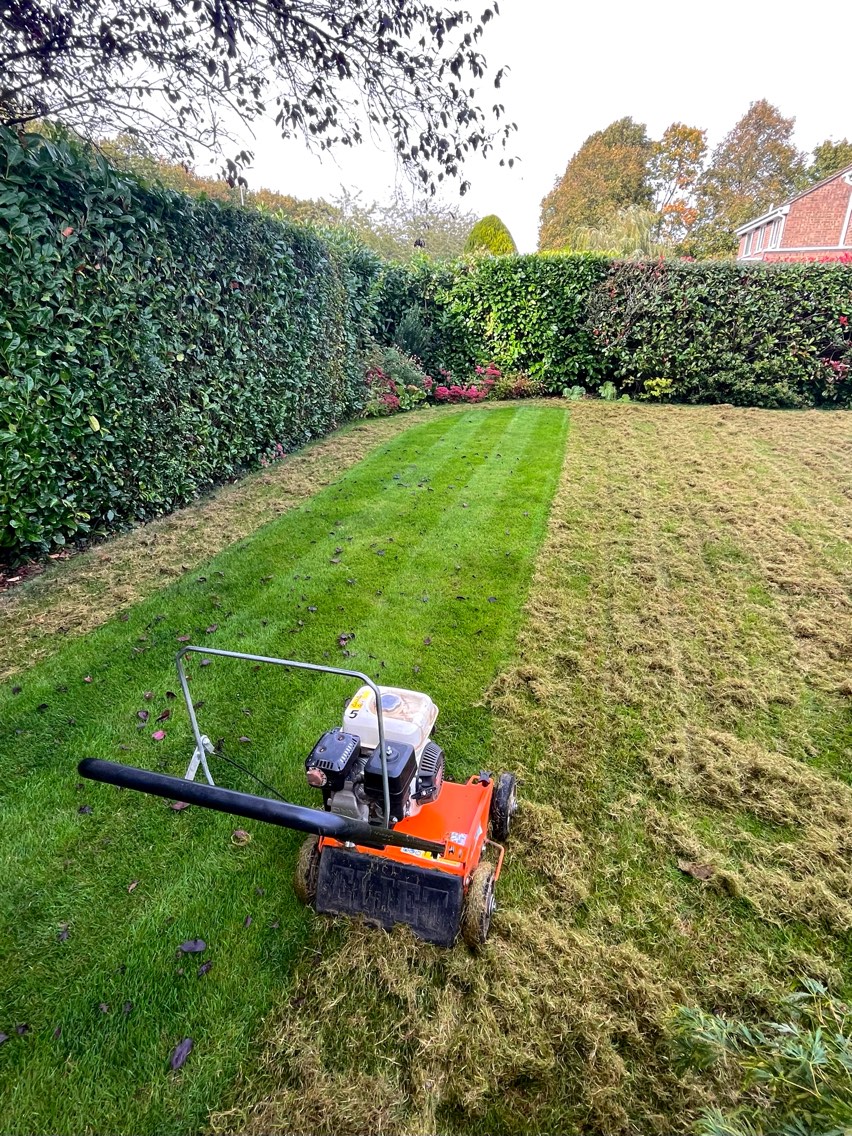
What are weeds? Weeds are unwanted plants that encroach on your lawn and compete with the grass for nutrients and water.
When do weeds appear? Seeds from weeds can find their way into your lawn on the wind, from your neighbour’s garden and can even be brought in by wildlife such as birds, badgers, rabbits and foxes.
What is the solution to weeds? Regular weed treatments applied throughout the year to reduce the competition for your lawn and allow it to thrive. Keeping your lawn strong and healthy is also vital, so weeds cannot encroach on weakened areas of lawn. So regular TopGrass treatments are recommended throughout the year to ensure the grass stays strong enough to compete with weeds.
Click here for further information on common lawn weeds.
What are yellowed grass tips? A yellowing/browning of the grass blade tips that make your lawn look unsightly or unhealthy.
When do yellowed grass tips occur? This will usually be caused as a result of mower blades that need to be sharpened. Blunt blades will tear, rather than give a clean cut, leaving that yellowed look on the blade.
What is the solution to yellowed grass tips? Mower blades should be sharpened at least once a season to avoid this occurrence.
